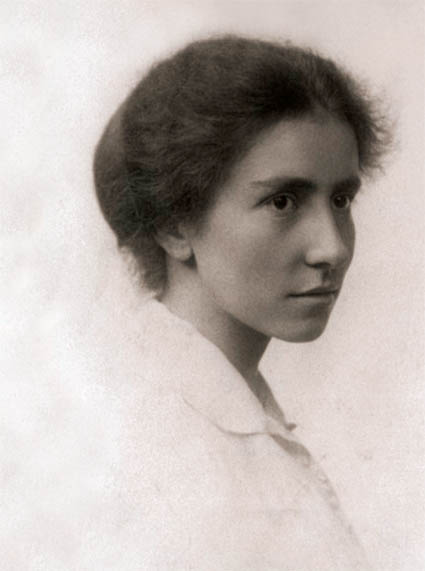
Dorothy Garrod became Britain’s first female professor when she was made
Disney Professor of Archaeology at Cambridge Univerisity.
Dorothy was born in London on 5th May 1892, the only daughter of Archibald and Laura. She was initially educated at home, however by 1911, she was attending New Birklands in St Albans Hertfordshire and, in 1913, Dorothy entered Newnham College, Cambridge, to study history and classics.
When Dorothy left Newnham in 1916, the war was raging and her brothers Noel and Thomas had already become victims of the fighting. She joined the Ministry for Munitions for a short period, before becoming involved with the Catholic Women’s League, a group founded in 1906 by Margaret Fletcher, who had seen the Suffrage movement begin but believed it was fraught with danger. Margaret proposed to establish a league of Catholic Women, contending that the League needed women with balanced common-sense and it should “utilise the average woman in convincing the Catholic world that business like methods and intellectual gifts are excellent weapons in the service of God”.
In the First World War, the Catholic Women’s League (CWL) provided recreation huts for servicemen in both Britain and behind the lines in France and Belgium. Their first recreation hut in France was near to Boulogne and, by the time the war ended, they had a total of thirty-five huts. Dorothy was to go to France with the CWL in 1917, remaining with them and working as an ambulance driver until she was discharged in 1919 from Germany. It is possible she was in the country when her younger brother, Basil, died from pneumonia in Cologne, February 1919.
Deeply affected by the deaths of her three brothers and her unofficial fiancé, Dorothy went out to Malta to join her parents, where her father, Archibald, was in charge of the War Hospitals on the island. Archibald suggested that to occupy her mind, she should investigate the prehistoric antiquities on the island, which lead to a lifelong passion for archaeology and the study of prehistory.
In 1921, the family returned to England and Dorothy enrolled at Oxford to take a diploma in anthropology, which she achieved with distinction. Her archaeological career went from strength to strength and, in an excavation in Gibraltar in 1925, she uncovered parts of a Neanderthal skull.
With her reputation growing, Dorothy took part in numerous excavations in and around Palestine, making or being involved in many significant discoveries. In 1939, she became Disney Professor of Archaeology at Cambridge University and the first ever woman professor.
Her archaeological work was interrupted by the Second World War and, in 1942, Dorothy was recruited into the RAF, where she worked at RAF Medmenham in the Air Intelligence Unit interpreting aerial reconnaissance photographs.
At the end of the war, Dorothy returned to Cambridge and resumed her position as Disney Professor of Archaeology; a position she held until 1952. Having resigned her professorship, Dorothy returned to her research in palaeontology, participating in several significant digs in Lebanon.
Towards the end of her life, she suffered health problems and, in 1962, she was forced to deliver the Huxley Memorial Lecture sitting down. Dorothy’s last appearance in public was in 1968 when she was the first woman to receive the Gold Medal of the Society of Antiquaries. Later that year, she had a severe stroke and was hospitalised in London before being taken to Hope House Nursing Home in Cambridge, where she passed away on 18th December 1968. Her ashes are interred in her parent’s grave at Melton Old Church.
For her war service during the First World War, Dorothy received the British War and Victory Medals.
